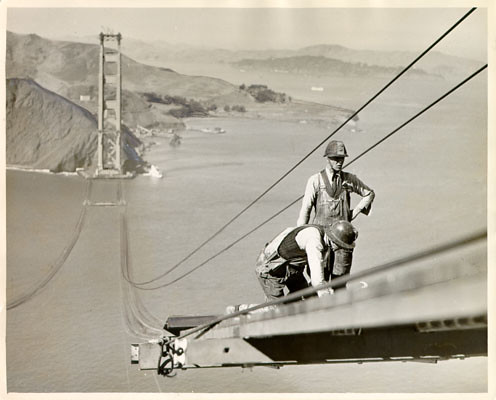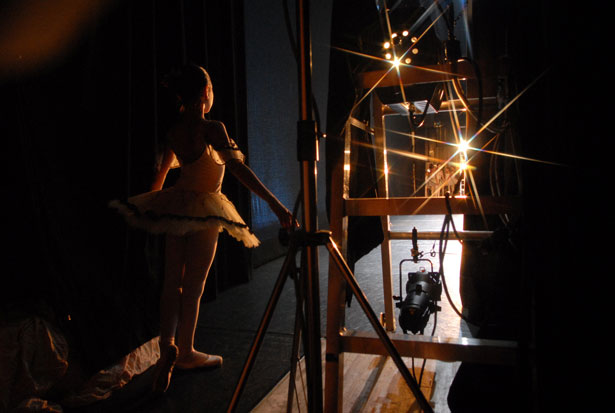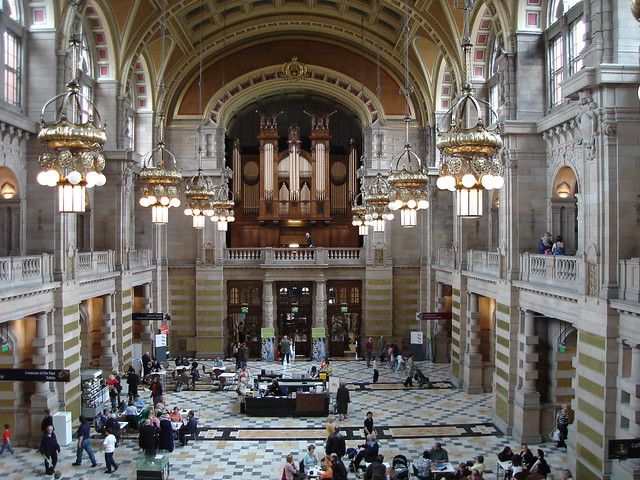We work with over 2,000 regional partners each year to develop exhibitions, festivals, programs, and projects. But radical collaboration with our community only works if we also collaborate internally as a team.
Five years ago, this was easy. We were seven people in a room, laser-focused on making the MAH a community gathering place and cultural center. We all collaborated to develop programs, strategies, and community partnerships. We sat next to each other, pulled each other into ad hoc meetings, introduced each other to new collaborators, and got things done together.
Now, our staff is three times the size it was five years ago. This growth has strained our internal ability to collaborate in two ways:
- Sometimes, we fail because we are too collaborative. The tools and techniques that worked for us when we were seven people in a room don't work for twenty. We can't invite everyone to the meeting. We can't get input from everyone on each decision. We waste time, increase confusion, and get less done.
- Sometimes, we fail because we are not collaborative enough. As we grew, we built teams with distinct leaders and goals. Some staff spend all their time on project that are invisible to others. There are some community partners who are effectively "owned" by one staff member, which limits opportunities for that partner across our institution.
SLACK. In just one month, using Slack has had an immediate, significant impact on our team. Slack is a combination messaging/file-sharing tool intended to replace internal email and intranets. Conversations are grouped into channels (for projects, teams, initiatives, etc.). We've used Slack to completely eliminate internal email. It reduces email, increases clarity of who does what, and reinforces collaboration. Every channel in Slack is public by default. That means any staff member can check out what's going on in any of our teams or projects. You can pose a question to a channel without inducing reply-all headaches. It's impossible to accidentally leave someone out of a decision where their input matters. Frontline part-time staff are part of the conversation. We celebrate each others' wins digitally without clogging anyone's inbox. And from a workflow perspective, we can separate communication with colleagues (in Slack) from community partners (in email).
SALESFORCE. Like most museums and nonprofits, we have a donor database. For years, we had an expensive, clunky, black box that only some people had access to and fewer knew how to operate. It was like grandpa's car in the garage--you had to know all the tricks to get it to run. This year, we made the leap to Salesforce. Our data catalyst, Karen Bush, who ran grandpa's car like a champ, is leading our transition to a cloud-based, open database that feels like a fleet of shiny vespas. What does Salesforce have to do with collaboration? Opening up our database enables more of us to work together to solicit, acknowledge, and thank donors. And--crucially for us--we aren't just using Salesforce for donors and members. We're using it for creative collaborators too. Instead of each staff member tracking their own community partners, we're building a shared database of all the partners who contribute time, money, and talent to the museum. When I meet with a donor who plays in a jug band, I don't keep that information to myself or blast an email to the community programs team. I log that donor's talent in Salesforce, so our community programs staff can find him next time they are looking for musicians. Salesforce is part of a much bigger strategy for us around partner engagement. A shared database enables staff to share our partners' talents and interests with each other, so we can matchmake great opportunities for everyone.
SHARED GOALS. One of the hardest things for me as the director of a growing organization is learning how to lead a larger team. When we were a small team, I had direct access to everyone, and we could turn on a dime. I could stand up in the office, announce a meeting, lead a discussion on an issue, and we could head in a new direction immediately. Now, even booking that initial meeting would take time. This isn't necessarily a bad thing. I'm leading a bigger crew now, and we can get bigger things done. But it means we have to build goals and communicate clarity in new ways. We're about 6 months into trying a system for this called OKRs (objectives and key results). The basic principle is this: we set big objectives for the organization. Each team sets objectives that roll up into those big shared goals. We set "key results"--measurable indicators--of achieving those objectives. The OKRs are publicly shared, measured, celebrated, and discussed. We're still working out the kinks in the system, but the basic idea (that we set goals for a period and everyone can see how their work contributes to those goals) is powerful. And it's forcing me to be more disciplined in my leadership... which should enable us to accomplish bigger things.
OPEN OFFICE. Two years ago, in the midst of growth, we split from one office to two to reduce crowding. But the negatives of this split outweighed the positives. People felt disconnected from each other. We weren't celebrating wins together like we used to. So when we prepared to add three new positions in 2016, we made a counterintuitive decision: we moved back into one office. There are more people in it than ever, but it feels good. People feel empowered to put on headphones or go offsite when they need quiet focus, but when we're together, we're together.
HONESTY. For a long time, I had a split consciousness about our growth. On the one hand, I was thrilled about our ability to expand our community impact with a bigger team. At the same time, I feared that growth would mean bureaucratic sludge. I feared that growth would squash our creativity and community focus. That people would feel confused or left out. That I would not be a good leader to 20 people the way I was to 7. The reality is that growth has meant more structure. It's been critical to invest in systems like Slack, Salesforce, and OKRs to bring people together and keep us moving forward as a team. It's also been critical to choose to do things like the open office when we think it will strengthen our collaboration.
Being intentional and honest about growth has kept us strong. We keep reasserting our core value of radical collaboration and find new ways to live that value. At the same time, we're honest about changes in how we collaborate. Not everyone is part of every decision now. There's an org chart. These things help us do our work. They also diminish the sense of creative freedom that marked the MAH a few years ago. That's OK as long as we are honest about it.
The biggest mistake I made as we grew was not to proactively address my personal fears and hesitations about growth. I resisted building better structures. I didn't own up to their necessity, impact, and tradeoffs. Now, I own it. Now, instead of resisting growth, I'm learning how to make structure work for us--so we can continue to grow in ways that are gloriously, radically collaborative.













